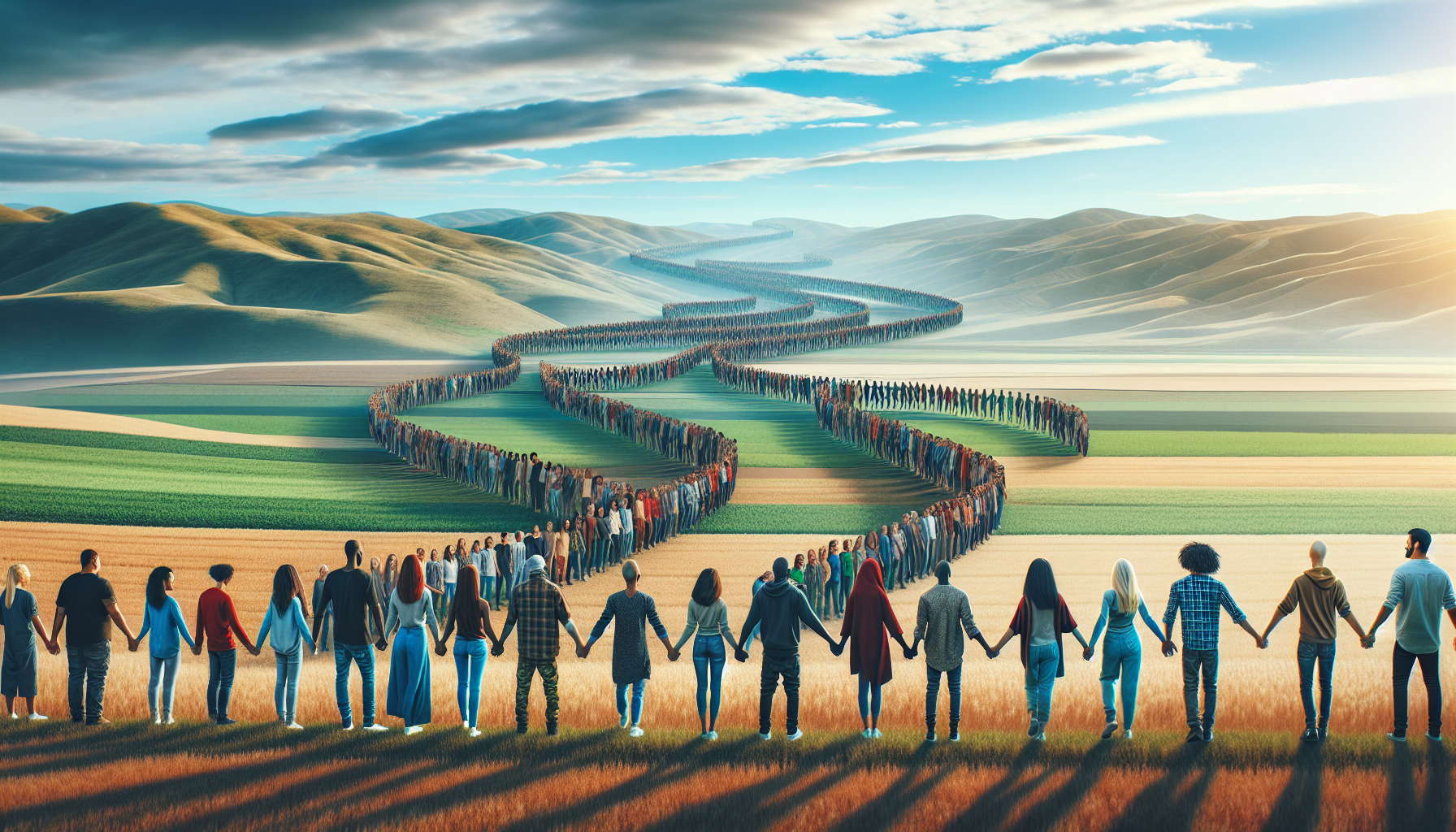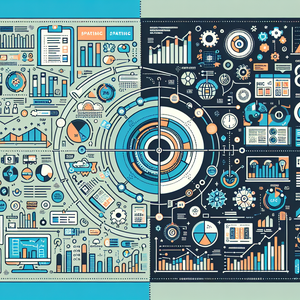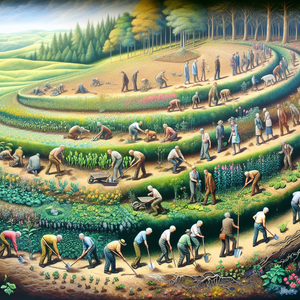The Digital Artisan Renaissance: Redefining Craftsmanship in the Age of Technology

Historically, artisans were revered for their mastery in crafting goods by hand—jewelry, furniture, textiles, and art that were both functional and beautiful. These skilled creators played a pivotal role in society until the Industrial Revolution and the rise of mass production, which marginalized craftsmanship in favor of efficiency and uniformity. However, recent technological advancements have enabled a resurgence of artisan culture, albeit one that operates in a digital realm. At the heart of this renaissance is accessibility. Modern tools like 3D printers, virtual design software, and blockchain platforms are democratizing the creative process, empowering individuals to experiment and innovate without the constraints of traditional manufacturing systems. Today’s digital artisans are no longer confined by geographical location or limited by the cost of materials—they are global, agile, and boundary-pushing.
Transformative Technologies Shaping the Movement
The Digital Artisan Renaissance is being driven by three key transformative technologies: 3D printing, virtual reality, and blockchain. These tools are enabling creators to redefine art, design, and functionality in unprecedented ways.
3D Printing: Crafting Without Limits
One of the most revolutionary tools for digital artisans is 3D printing, which has fundamentally altered the way objects are designed and produced. Unlike traditional manufacturing methods that require costly molds or mass production runs, 3D printing allows creators to produce bespoke, small-scale, or highly customized items with precision. Beyond its creative potential, 3D printing also offers sustainability benefits. By enabling iterative design and minimizing material waste, it provides a more eco-friendly alternative to traditional manufacturing processes. This combination of artistry, precision, and sustainability makes 3D printing a cornerstone of the Digital Artisan Renaissance.
Virtual Reality: Expanding Creative Horizons
Virtual reality is another transformative tool that is empowering digital artisans to transcend the physical limitations of their craft. With VR, creators can design immersive experiences that transport audiences into entirely new realms, blurring the lines between art, technology, and storytelling. For example, architects are using VR to design structures that exist purely in the metaverse, offering users virtual spaces to explore and interact with. Artists are hosting virtual exhibitions, enabling global audiences to experience their work without the constraints of physical galleries. Moreover, VR is opening up new career pathways in education, healthcare, and entertainment, proving that imagination is the only limit in the digital age.
Blockchain: A Revolution in the Creator Economy
Blockchain technology has become a powerful ally for digital artisans, offering a secure and decentralized platform for creators to monetize their work. Through non-fungible tokens (NFTs), artists, musicians, and designers can sell unique, verifiable pieces directly to collectors, bypassing traditional intermediaries like galleries or record labels. This shift has empowered creators to retain ownership of their intellectual property, earn royalties on resales, and engage directly with their audience. Beyond fine art, game developers, graphic designers, and even writers are leveraging blockchain platforms to distribute their work, creating a more equitable system for creators and consumers alike.
Opportunities and Challenges in a Digital Age
While the Digital Artisan Renaissance offers tremendous opportunities, it also presents unique challenges. The constant evolution of technology requires creators to stay up-to-date with new tools and platforms, which can be both time-consuming and expensive. Additionally, issues such as copyright infringement, market oversaturation, and the environmental impact of technologies like blockchain pose significant hurdles. Another challenge lies in balancing artistry with automation. As algorithms and artificial intelligence increasingly become part of the creative process, some critics question whether work created with technological assistance can still be considered "authentic" art. Despite these challenges, the future is bright for digital artisans, as technology continues to unlock opportunities for experimentation and innovation.
The Digital Artisan Renaissance is a testament to how technology can amplify human creativity rather than replace it. By blending the principles of traditional craftsmanship with transformative tools like 3D printing, VR, and blockchain, today’s digital artisans are redefining what it means to create in the 21st century. This movement is not only reshaping industries but also inspiring a generation of creators to embrace the possibilities of a digitally connected world.
3D Printing Designer
Architecture firms, fashion houses, and tech-driven manufacturing companies like Formlabs and Stratasys
Responsibilities
Design and prototype intricate, custom products such as jewelry, furniture, or industrial components using 3D modeling software like CAD or Rhino.
Skills Required
Expertise in 3D printing processes (e.g., FDM, SLA)
Proficiency in design tools (Blender, SolidWorks)
Strong understanding of material science.
Unique Qualifications
A mix of artistic creativity and technical precision
Ability to optimize designs for minimal material waste and sustainability.
Virtual Reality Experience Designer
Gaming studios like Epic Games, metaverse pioneers like Meta, or educational organizations developing virtual learning environments
Responsibilities
Create immersive VR environments for industries such as gaming, education, or healthcare.
Collaborate with UX/UI designers and developers to build interactive and visually engaging experiences.
Skills Required
Proficiency in VR design tools (Unity, Unreal Engine)
Knowledge of spatial design principles
Experience with 3D modeling and animation.
Unique Qualifications
A deep understanding of user immersion combined with storytelling skills to craft compelling virtual narratives.
NFT Strategist and Digital Asset Manager
Media agencies, blockchain startups, and digital art platforms
Responsibilities
Assist creators in minting, marketing, and managing NFTs on blockchain platforms.
Develop strategies to maximize revenue through royalties, auctions, and community engagement.
Skills Required
Proficiency in blockchain technology (Ethereum, Solana)
Knowledge of NFT marketplaces (OpenSea, Rarible)
Experience in digital marketing or branding.
Unique Qualifications
A creative eye for identifying marketable digital assets paired with technical know-how in smart contract creation and management.
Metaverse Architect
Metaverse firms like Decentraland, VR gaming companies, and digital real estate developers
Responsibilities
Design and build virtual spaces for the metaverse, including virtual homes, concert venues, and retail environments.
Work closely with developers and 3D artists to create functional, immersive worlds.
Skills Required
Expertise in 3D architectural tools (Autodesk Revit, SketchUp)
Experience with VR/AR design
Strong sense of virtual aesthetics and functionality.
Unique Qualifications
A background in traditional architecture combined with advanced technical skills in VR/AR software to design spaces that blend functionality with creativity.
Sustainable Product Designer
Green-focused startups, design consultancies like IDEO, and product manufacturers aiming to integrate sustainable practices
Responsibilities
Develop eco-friendly products using digital tools such as 3D printing, focusing on reducing waste and optimizing material usage.
Collaborate with engineers and supply chain teams to ensure sustainable production.
Skills Required
Knowledge of sustainable design principles
Proficiency in lifecycle analysis (LCA) tools
Expertise in software like Fusion 360 or Grasshopper.
Unique Qualifications
A passion for environmental impact paired with technical design skills, with an emphasis on circular economy solutions.


